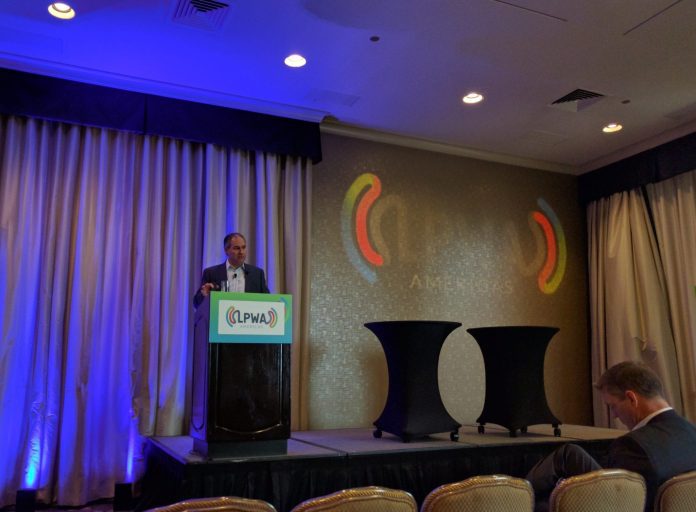DALLAS–Allen Proithis, president of Sigfox North America, gave a keynote address titled “Power to the devices,” at this week’s LPWA Americas event. He spoke of the current state of IoT and gave requirements for what is needed from low-power wide-area networks to help continue to move the internet of things forward.
Proithis said today’s technology landscape is pivoting around IoT much like the ‘.com’ or ‘i-X’ era – everyone is rebranding as an IoT company. He said even security attacks, like the DDos hack from last month, are incorrectly being branded ‘IoT’ because it is ‘sexy.’

“There is a lot of diversity and estimates on IoT,” Proithis said. “Whatever the number, it is one of the most exciting markets we have ever seen.”
Predictions vs reality
But there exists a huge gap between the rhetoric and reality, when there exist estimates that put tens of billions of connected devices in play by 2020, just a couple of years away. Proithis said even the best sales are connecting tens of millions of devices, not billions. He claims this is because the most existing technology today is made for people, not made for things or machines.
The Sigfox president says that the gap between future predictions and today’s landscape is about three basic things:
- Cost (too expensive) IP cost of people-oriented technology is more expensive than module cost
- Battery Life (too short)
- Complexity (too many pieces) – hardware, connectivity, application layer
Proithis went on to explore the evolution of other technologies, and the process and time it takes to go from being talked about and tested to being widely adopted. He cites both the model-T and modern computer as taking over 30 years to arrive after the earliest signs of the underlying technology came about. He says IoT, like those others game-changing innovations, needs to hit a point where it is good enough for the masses. At that point, it will reach its tipping point and take off.
But he kept expectations in check, stating that compromise is inevitable when using an IoT network, and enterprises will need to pick the characteristics appropriate for the problems they will need to solve.
What is needed of LPWA

Proithis gave four areas of low-power wide-area networks that are required for enabling IoT:
Energy efficiency
- Ultra-narrow band spectrum
- No permanent signaling – devices “wake up” only to transmit a short message
- Low power consumption by devices – years of battery life
Ubiquitous connectivity
- Global homogenous and scalable
- One cloud through with all data transits
- Real-time signal processing at scale
Simplicity
- “Out of the box” connectivity – no pairing required
- Simple network infrastructure requirements, simple rollout planning and execution
- Channel partners: “one contract, one-network” model
Low cost
- Network: license-free ISM band and cost-efficient base stations
- Objects: license-free, standardized, low unit value chipsets
- Subscription model with some annual fees for as low as <$1
Sigfox has plans to be in more than 60 territories by 2018, working with operators around the world. Big companies like Intel and Samsung have invested in the company, which has gained more than $150 million in investments.

